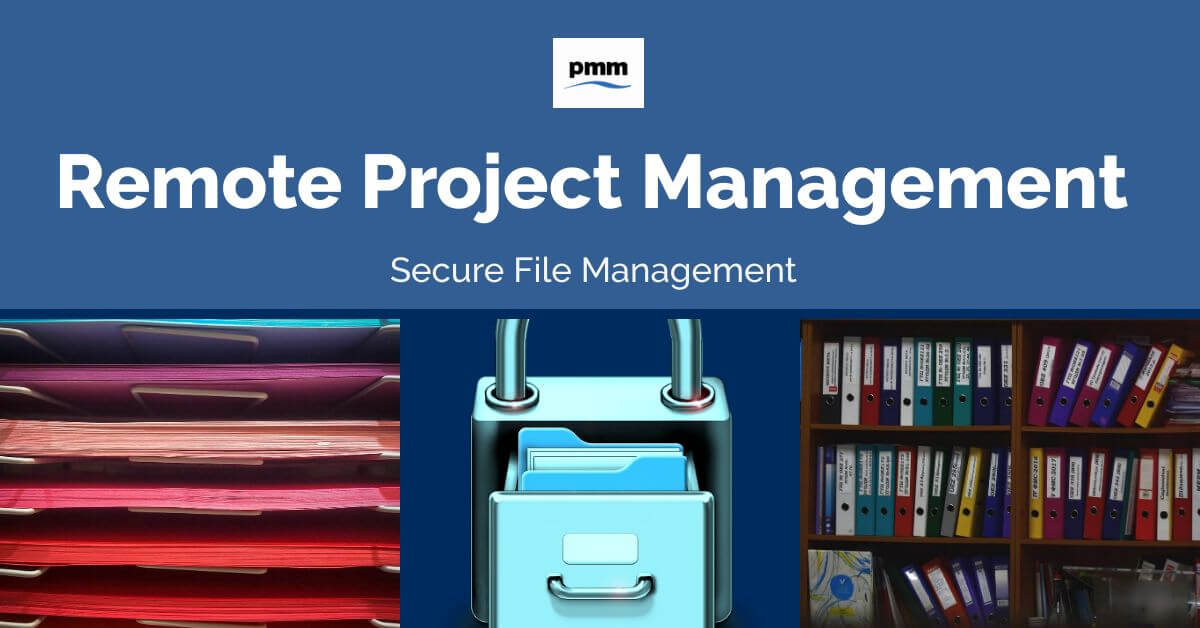Without a filing cabinet or desk draw to turn to, it can be tough to keep track of documents. This is one of the many challenges that come along with managing a remote team: file management and transfer.
It’s not as simple as getting a software subscription and away you go transferring your work. There are things to consider, like:
- How to prepare and run your file sharing system
- What features you want to have in your new filing tool
- Which file transfer and management tools are best
So that your project can run smoothly, avoiding some of the standard pitfalls. No one needs the nightmare of working on a now-defunct file because they didn’t get the update buried in an email.
Setting up a file sharing system
It’s not good enough to just have files flying over email constantly. This is how a team loses track of a document and hundred of comments start to drown out the work.
Having a cloud-based file transfer system will make things flow smoothly, and not place too much of a burden on the storage capacity of the laptops of you team. When starting a new project, you need to get your filing system ready to go.
Some key principles include:
- Be structured and keep any personal files you store on the same platform siloed from work, and ensure your team knows to do the same
- Be organised with a good file naming system so that no one will be scratching their head where to find a document
- Be prepared; set up your sharing settings so that the right people have access to view, comment, or directly edit anything you’re storing
And be sure that your team all understand how the system works. Your logic for naming files needs to be clear for anyone who will be adding into the storage space.
What you want out of your new system
Not every file sharing system is the same. There are ones that just allow you to upload and download documents between users, there are others where you edit your documents directly on the cloud system.
A key consideration is how many collaborators a system can allow. Being scalable might be important to your project, whether now or in the long-run. You don’t want to get caught short in the future by reaching a user cap.
The amount of storage you need will depend on your project. If you’re producing lots of graphics, drawings, databases, etc then ensuring the system you go for can handle lots of data and allow you to expand your needs is really important.
Another feature that might not occur to you straight away is advanced search options. Having a tool that allows you to search not only file names, but their contents, can cut out lots of time hunting for the right document.
File management systems to consider
Google Drive
It’s very likely to be familiar to all, or at least most of your team already, which is useful. Being able to create documents in the system is convenient for real-time collaboration.
Google Drive will work across most operating systems, and with a business subscription you and your team get 24/7 technical support.
One Drive
As with Google Drive, in OneDrive you get to create and edit documents directly in the cloud system. A big advantage is the familiar interface – it looks and feels just like Microsoft Office apps.
It comes with document recovery for those accidental deletions and 24/7 technical support, too.
Dropbox
One of the most famous file sharing systems, its reputation is built on its reliability. Your team can set it to auto-sync saving and uploads and it has lots of third-party app integration options.
The security layers of Dropbox, with extra encryption for businesses, is a standout feature.
IDrive
It may not be as well known as rivals, but it’s super easy to use and has huge storage capabilities. It’ll work across most operating systems and hardware and has solid encryption as well.
Packages for unlimited users and terabytes of storage at reasonable prices make IDrive an interesting proposition.
MediaFire
There are some very good price options for MediaFire with some hefty storage limits for the cost. It doesn’t work across so many platforms and lacks a lot of integrations, but worth noting if you’re looking for huge storage capacities.
Conclusion
Making sure everyone working on your remote project has access to the files and data they need is a very different process to working in a bricks and mortar office. For this task, the cloud is your friend. File transfer and management on a remote team will need new software tools and a different style of planning, but it’s all eminently achievable.






